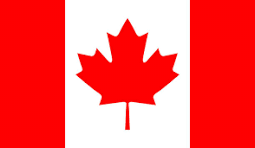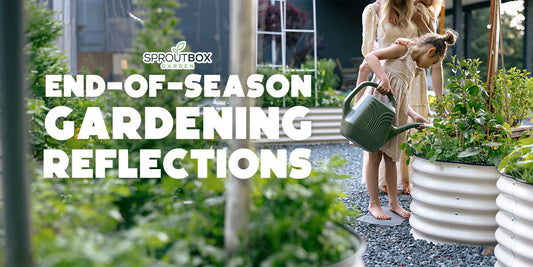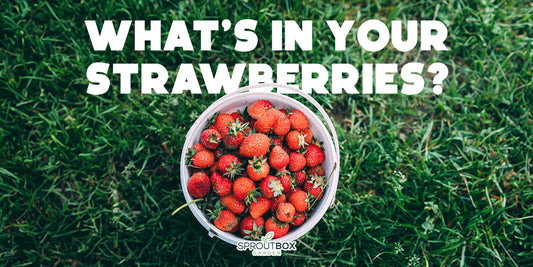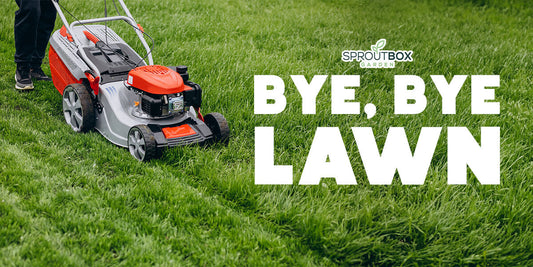Fall Gardening: Keep Your Garden Thriving All Year Long

You’ve unlocked the secret—you can absolutely grow vegetables through fall and winter, and once you learn how, there’s no going back!
While this time of year may signal the end of your summer harvest, it’s also the perfect time to start planning your fall and winter garden. Cooler temperatures don’t mean your garden has to shut down. In fact, many crops thrive in colder weather and can even improve in flavor.
What Can You Grow This Fall and Winter?
-
Hardy Greens: Kale, spinach, Swiss chard, and mustard greens are perfect for fall and winter planting. These greens thrive in cooler temperatures, with some even tasting sweeter after a light frost.
-
Root Vegetables: Carrots, beets, radishes, and turnips are made for cold soil. These crops can survive temperatures as low as -5°C to -10°C, developing deeper, richer flavors in the cold.
-
Brassicas: Cold-hardy crops like cabbage, broccoli, cauliflower, and Brussels sprouts love cooler weather and can tolerate frost. Plant them now to ensure a strong harvest later in the season.
-
Legumes: Peas can handle light frosts and continue producing well into the cooler months.
-
Herbs: Hardy herbs like cilantro and parsley are surprisingly resilient. They can survive some frost and keep growing into winter.
How to Get Started with Winter Gardening
To kick off your fall and winter garden, there are a few key things you’ll need to consider:
-
Start with Raised Beds
Raised beds are ideal for extending the growing season because they help warm up the soil faster during the day and retain heat through the night. Metal raised beds are particularly good at this, but wooden beds will also work. The extra warmth from the raised soil can give your crops a head start, even in cooler temperatures. -
Use Mulch for Insulation
Covering your soil with mulch can help retain moisture and insulate plant roots, protecting them from sudden drops in temperature. Straw, leaves, or wood chips are great options for mulch. This added layer can also reduce weeds, so you’ll have fewer maintenance chores. -
Add Cold Frames or Row Covers
If you want to protect your plants from frost, cold frames or hoop houses are your best friends. These simple structures trap warmth and shield your crops from cold winds and frost. If you don’t have a cold frame, you can use row covers or even cloches to create mini-greenhouses over your plants, extending the growing season. -
Water Wisely
Even in colder months, your plants still need water—but not as much as in summer. Water early in the day so the moisture has time to soak into the soil before nighttime temperatures drop. This helps prevent freezing at the root level. -
Plan for Success
Timing is everything when it comes to winter gardening. Start by planting crops that mature quickly and can handle frost. For greens and herbs, aim to plant in early to mid-fall so they establish roots before the first frost. For root veggies and brassicas, plant as early as possible to give them time to grow strong before the colder weather sets in.
Indoor Gardening: An Easy Winter Option
If outdoor gardening during the colder months isn’t for you, indoor gardening is a great alternative. Herbs like basil, parsley, and thyme do well indoors on a sunny windowsill. You can also grow leafy greens, like lettuce and spinach, in small containers or use a hydroponic setup if you want to experiment.
Starting seeds indoors is another way to get a head start on spring. By the time warm weather arrives, you’ll have strong seedlings ready to transplant outdoors.
Why Winter Gardening Is Worth It
Gardening isn’t just about growing food—it’s about boosting your quality of life, staying active, and connecting with nature. Winter months can feel long and dreary, but having a fall or winter garden gives you something to look forward to. It keeps you moving, lifts your spirits, and lets you enjoy fresh, homegrown food, even when the world outside is frosty.
By planning your winter garden, you’re not just keeping the harvest going—you’re creating a rewarding experience that turns the colder months into a season of growth.
Now that you know how easy it is to keep gardening through the fall and winter, it’s time to get started and enjoy the rewards.
Happy gardening!



